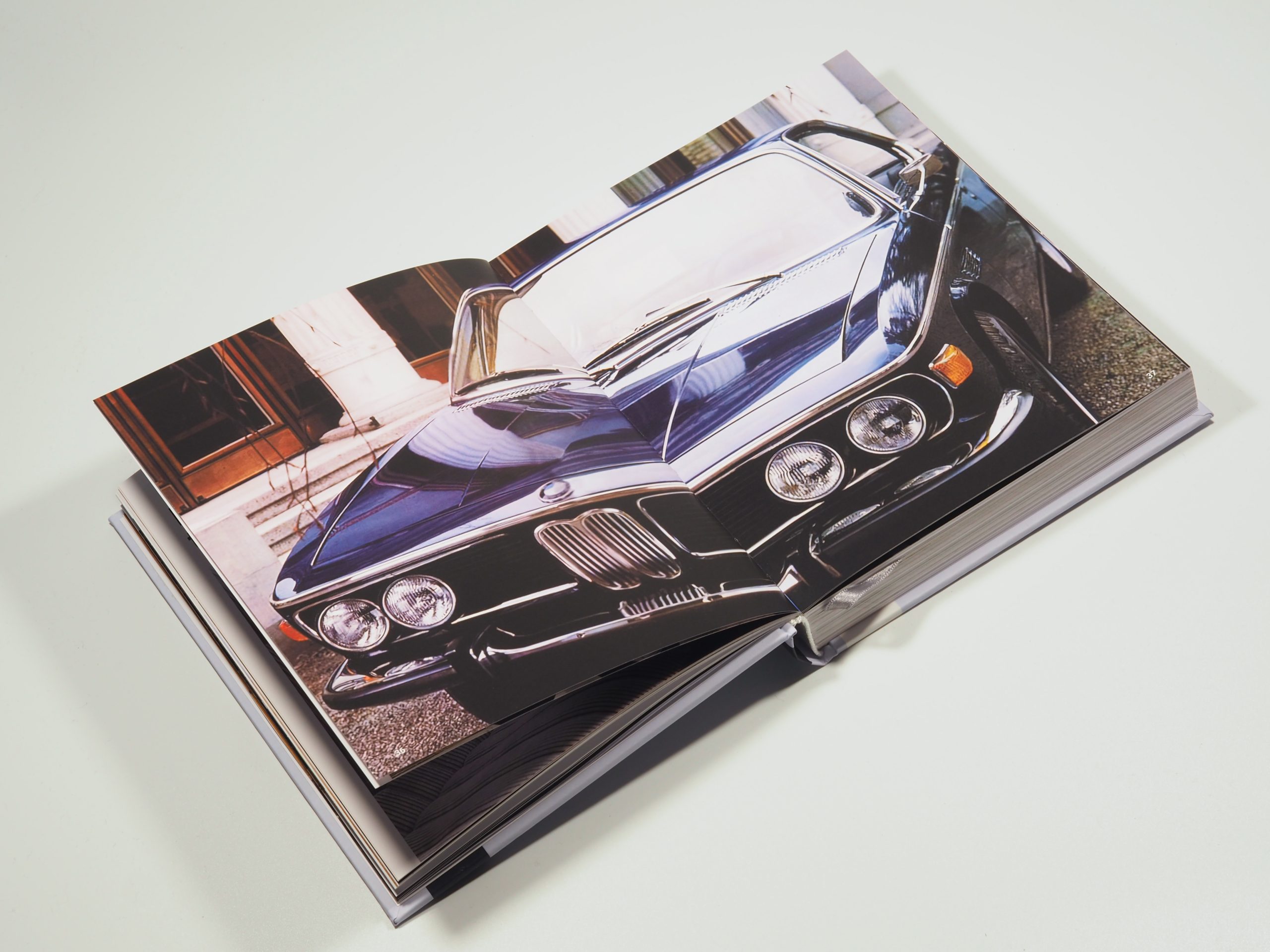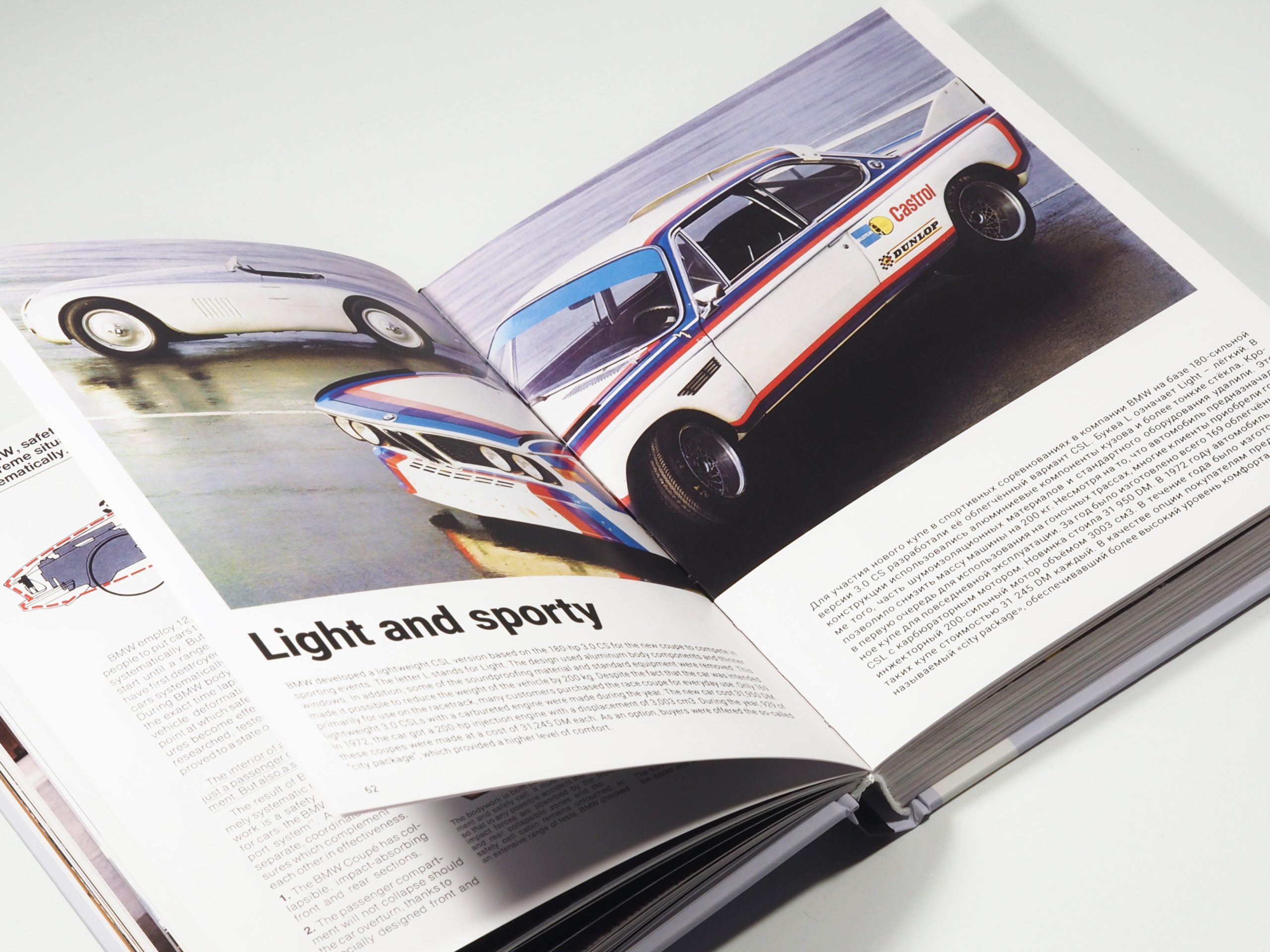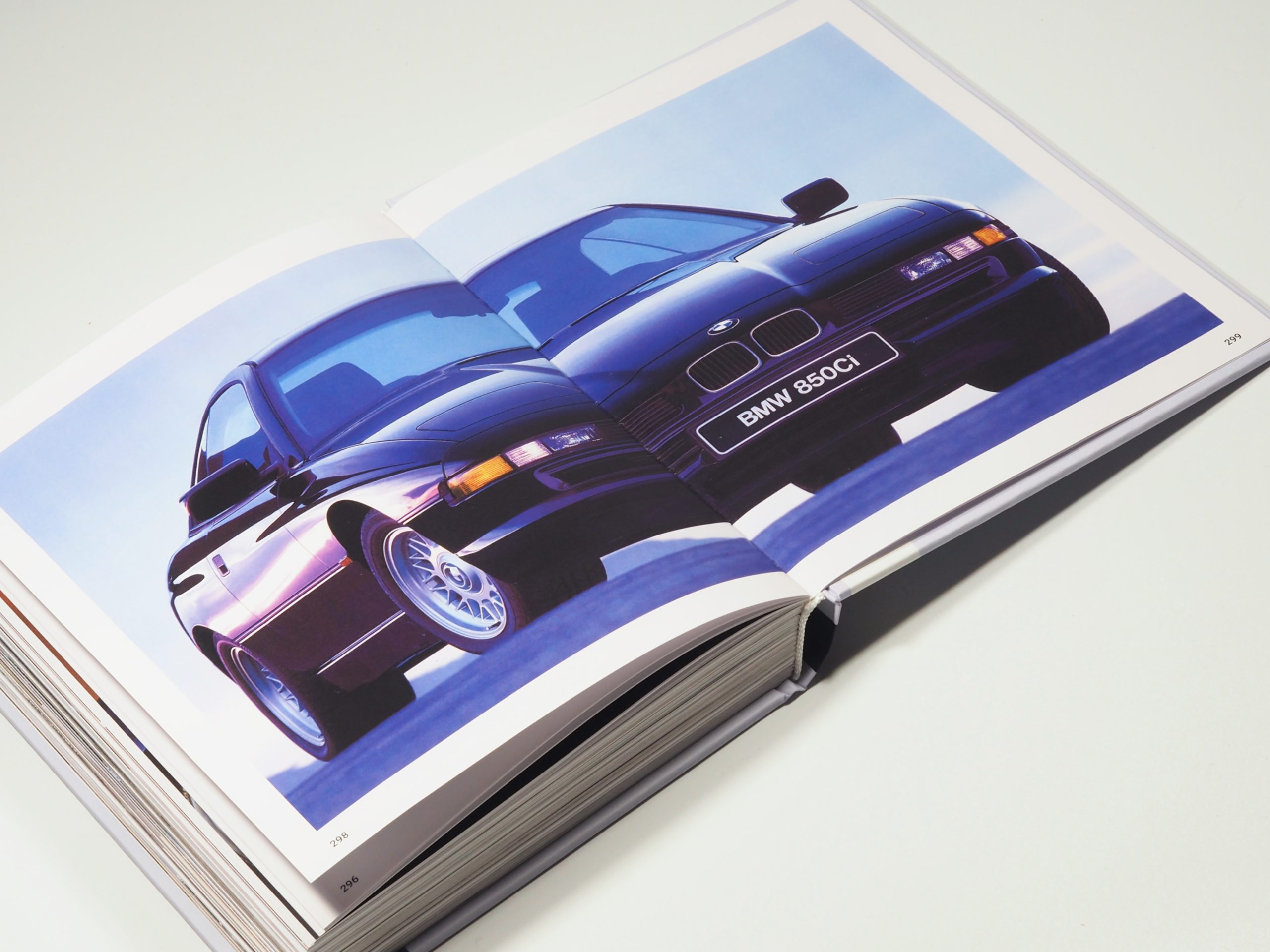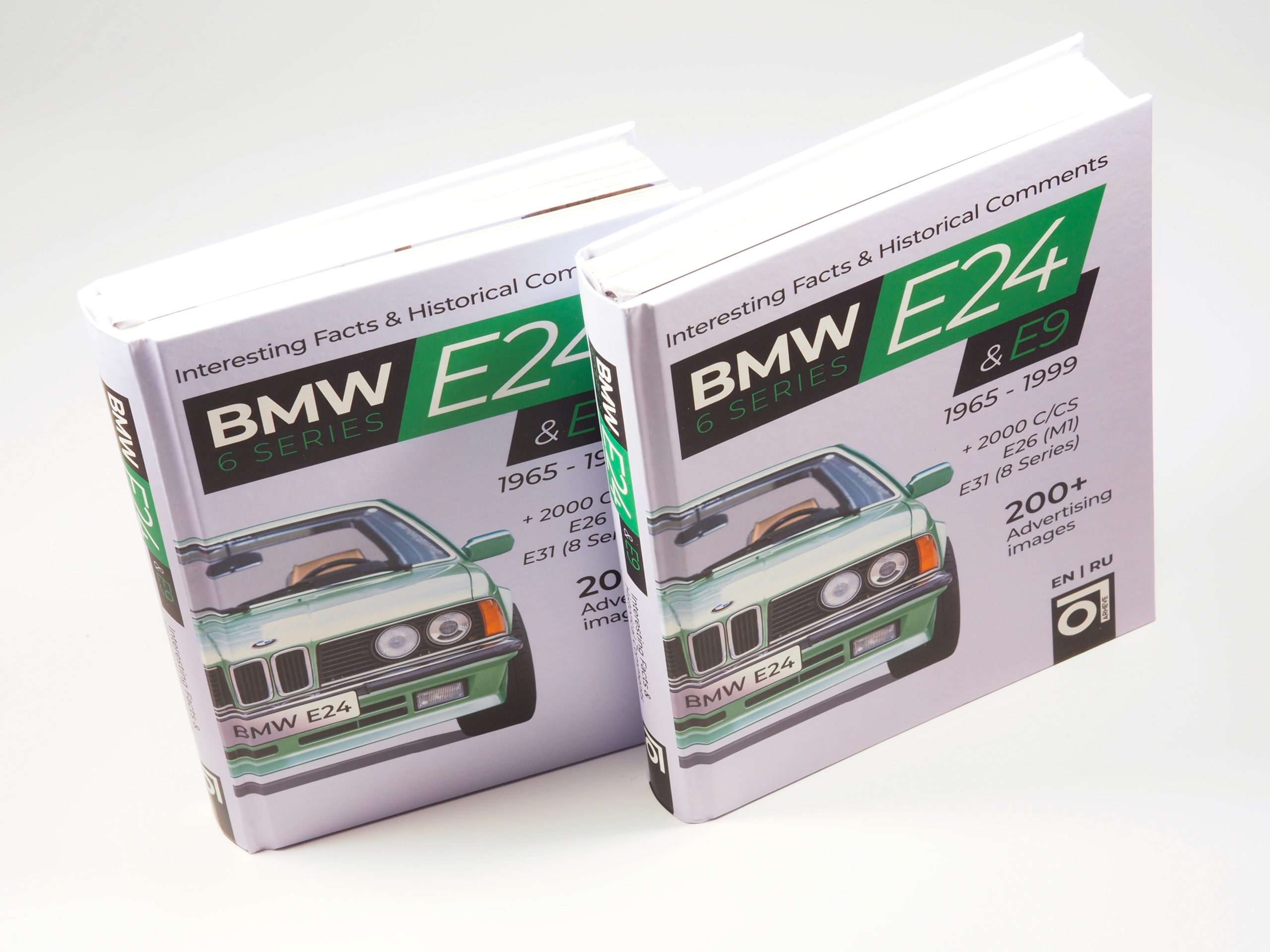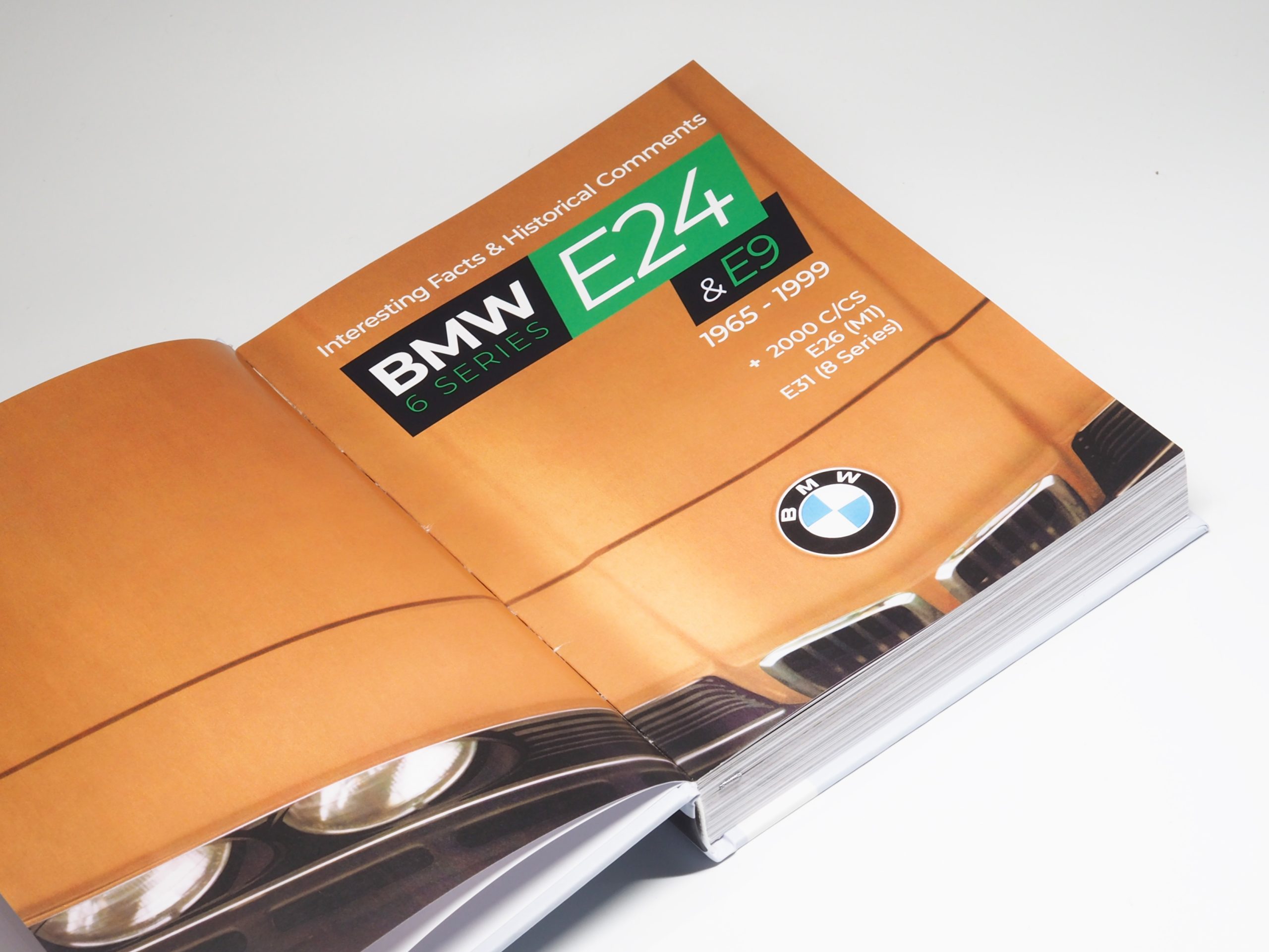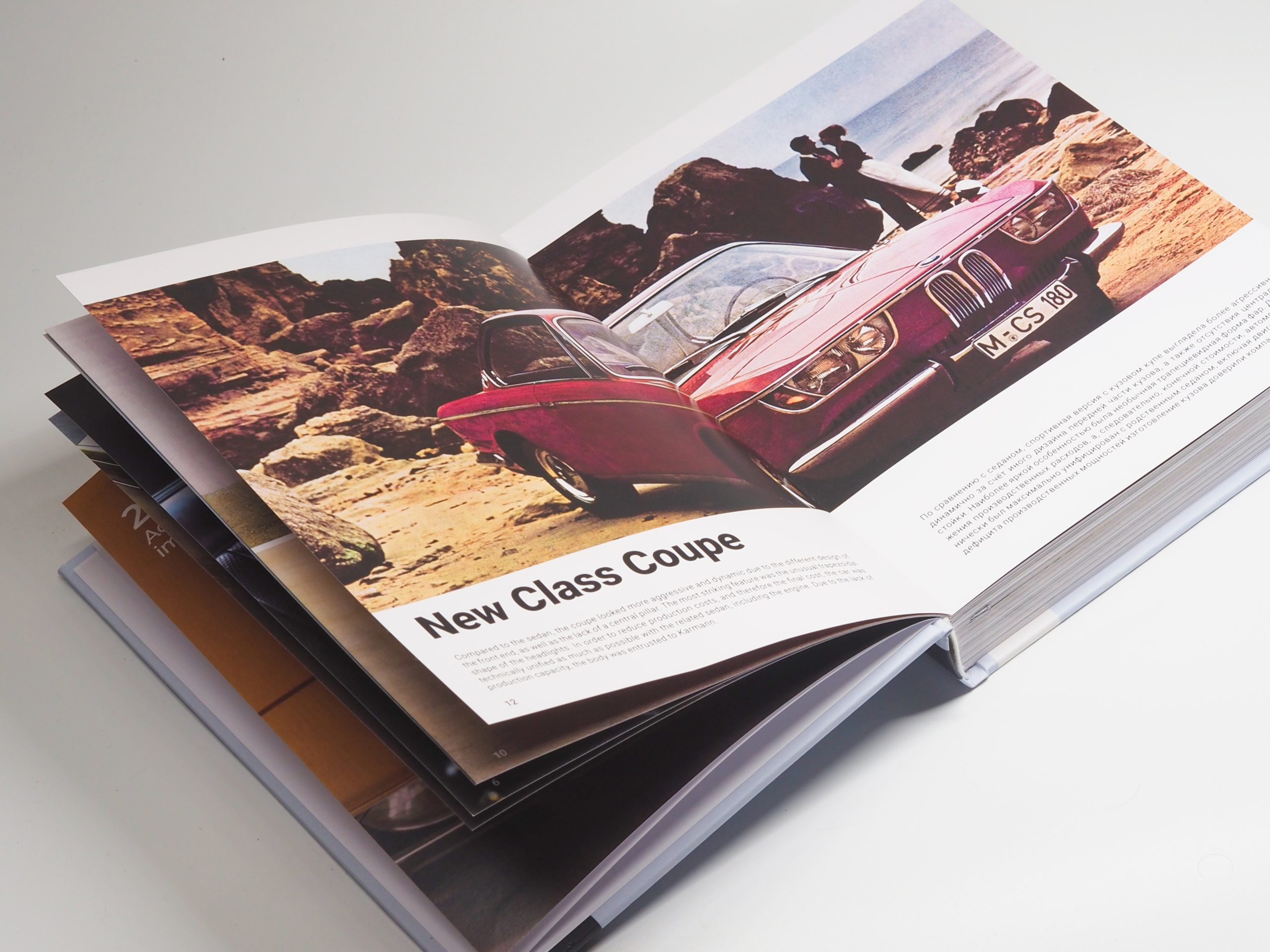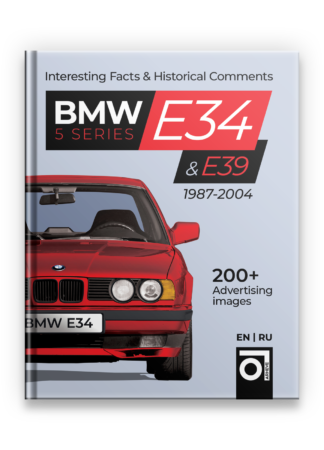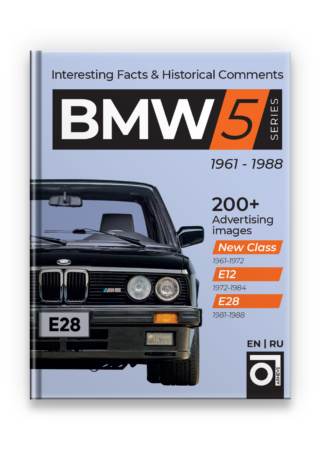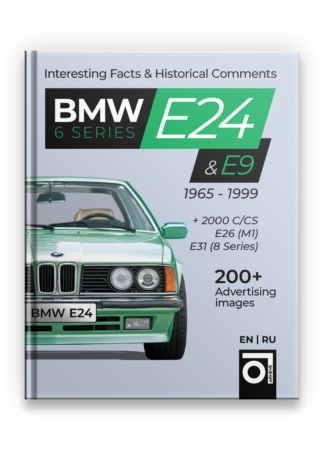Description
BMW E24 & E9 Hardcover book (fragment of the text)
The German company Bayerische Flugzeugwerke AG, later renamed BMW, began with producing aircraft engines. Many German World War I ace pilots, including Hermann Göring and Ernst Udet, flew in planes equipped with BMW IIIa engines.
But according to the Treaty of Versailles at the end of the war, Germany was forbidden to produce airplanes. BMW management was forced to urgently look for new consumers for its products and alternative sources of income. In the fall of 1923, the company presented its first motorcycle to the public, the BMW R32.
Having gained the necessary experience producing 2-wheeled vehicles, the company decided to go further and start producing automobiles. In October 1928, BMW acquired Fahrzeugfabrik Eisenach, which the year before had set up licensed production of the small British Austin Seven under the name Dixi 3/15 PS.
The upgraded version of this model was designated BMW 3/15 PS DA 2 and was produced from 1929 to 1932. In 1933, a completely new car, fully developed by the company’s specialists was presented, the BMW 303.
Under the hood of the new car was an inline 6-cylinder engine, which served as the basis for the brand’s further development. By the end of the 1930s, the firm was already offering a wide range of models, including the company’s pride and joy, the BMW 328 sports car.
That’s where the history of sports cars with the white and blue emblem began. BMW went through a difficult period after World War II. The loss of the production base in Eisenach during the post-war division of Germany, as well as marketing miscalculations, led the company into a financial crisis.
The situation was saved by entrepreneur Herbert Quandt, who invested a lot of money in BMW and thus preserved the independence of the Bavarian brand. The investment was aimed, among other things, at creating a new modern model that could attract a wide consumer audience to BMW products.
This is how the famous New Class family appeared, including the stylish and elegant sports coupes 2000 C/CS, in addition to sedans.
Compared to the sedan, the coupe looked more aggressive and dynamic due to the different design of the front end, as well as the lack of a central pillar. The most striking feature was the unusual trapezoidal shape of the headlights. In order to reduce production costs, and therefore the final cost, the car was technically unified as much as possible with the related sedan, including the engine. Due to the lack of production capacity, the body was entrusted to Karmann.
The 2000 CS coupe was based on the New Class sedan, so its wheelbase was the same size, 2,550 mm. For better stability on the road, the wheel track of the coupe was increased to 1,330 mm (+10 mm) at the front and 1,376 mm (+10 mm) at the rear. The coupe and sedan bodies were different not only by design, but also by proportions: the length increased to 4,530 mm (+30 mm), while the width and height were reduced to 1,675 mm (-35 mm) and 1,360 mm (-90 mm), respectively. Due to design differences, the curb weight increased to 1,160 kg (+90 kg) compared to the BMW 1800.
Read the continuation of BMW E24 & E9 story in the book.
Other books about history of BMW:

